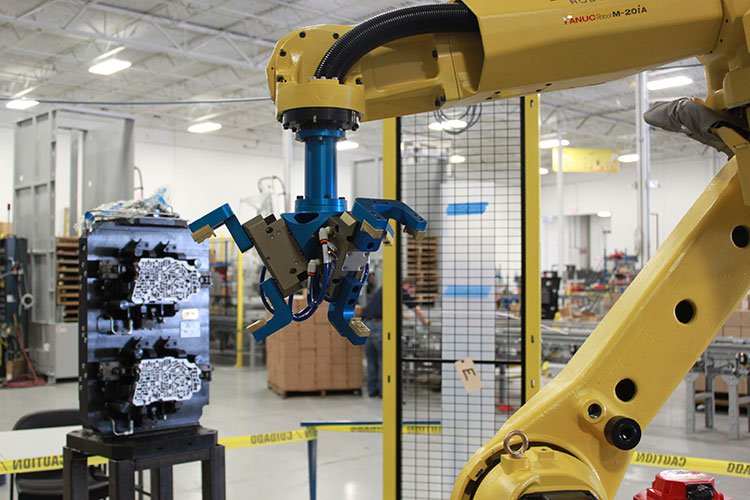Robotic machine tending can be defined as the automated process of overseeing a machine as it performs a certain task or job. The process also involves the loading of materials into a machine and the off-loading of finished parts out of a machine.
Most of the applications involving machine tending have been performed by humans for the longest time now. However, with the rising difficulties in finding qualified workers to tend to these machines, most companies are now paving way for the introduction of Robots in their workplaces.

The incorporation of Robots has greatly helped in making up for the lack of qualified employees.
Small and medium enterprises have also been provided with various options that can fit into their minimum budget.
Types of Machine Tending Cells
‘Do it Yourself’ Kit
The do it yourself kit gives you the opportunity to build your own custom cell. This is usually done by using a collaborative robot and an end effector, which can then be custom fit in your actual set up.
The do it yourself kit is also considered as the cheapest option since programming can be done manually. The set up is also very easy to integrate and you get to have fast payback. Usually, within less than a year.
‘I Don’t Want to Spend Time with Integration’ Kit
These are usually the pre-engineered machine tending cells. This kit comes with everything you need for your machine tending application, whether using an industrial robot or a collaborative robot.
Although this type of kit can be a bit expensive due to all the accessories needed and the integration time required, the setup still remains relatively small.
You can also be guaranteed of fast payback too.
‘All-in-One’ Kit
The all in one kit is usually used in huge investments. It mainly makes use of industrial Robots. Although some companies are offering inbuilt programming kits that are easier to program, it still remains to be a huge investment.
Safety guards, dedicated space for the machine tending cell and a trained worker to synchronize and program the machine are also required.
While machine tending can be a repetitive and tedious task, robotic machine tending can be used to tend to machines hence relieving the human employees from these repetitive tasks.
Advantages of Robotic Machine Tending
Improved Speed and Quality Process
A machine tending robot operates at an improved speed while reducing the risk of injuries that are often linked to working in close proximity with heavy machinery.
These robots are usually programmed in such a way that they can operate in reduced mode whenever they sense the presence of a human being entering their workspace.
The robots are also programmed to resume full speed once the person leaves it’s workspace.
Increased Productivity
Robotic machine tending does not only increase production capabilities, but it also increases consistency, production speed and quality.
With the collaborative robots, it has become quite easy to automate any type of manual tasks.
Compact Solution
Since space is always limited in most production facilities, most of the machine tending robots usually have small footprints.
The robots are also usually water and dust resistant thus keeping them out of harm’s way.
Less Expensive
Due to the availability of a comprehensive range of flexible standalone solutions, machine tending robots are becoming a viable choice especially for the small businesses.
This is because, these robots are generally easier to use and less expensive. The fact that once created, these machine tending robots can also be programmed to take up different tasks whenever new orders come in is also another reason why they are becoming a more viable option.
Conclusion
Machine tending robots have a lot of advantages and benefits that they can render to your business as seen above.
Other efficiencies that can be seen in tasks performed by machine tending robots include; injection moulding, sand casting, small parts assembly, cutting and machining.